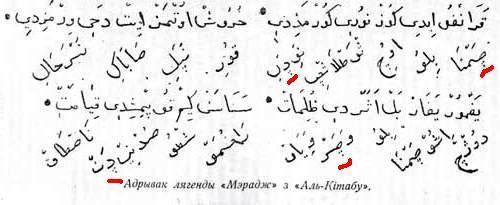 | ||
The Belarusian Arabic alphabet (Belarusian: Беларускі арабскі алфавіт/альфабэт, Biełaruski arabski ałfavit/alfabet (tar.), بيَلارُصقِ ارابصقِ الفاوِت) was based on the Arabic script and was developed in the 16th century (possibly 15th). It consisted of twenty-eight graphemes, including several additions to represent Belarusian sounds not found in Arabic.
Contents
The Belarusian Arabic alphabet was used by the Lipka Tatars, who had been invited to settle in Belarusian territory. During the 14th–16th centuries they gradually stopped using their own language and started using the Old Belarusian language rendered in the Belarusian Arabic alphabet. Books of that literary tradition are known as Kitab (Belarusian: "Кітаб"), which is the Arabic word for book.
Some Polish texts were also written in the Arabic script, dated not earlier than 17th century.
Additional graphemes
These graphemes were used during the 16th-20th centuries to write Belarusian and Polish.
Equivalence chart
Vowels are not listed as they were marked with diacritical marks, as in Arabic.
Source: be-x-old:Беларускі арабскі альфабэт
